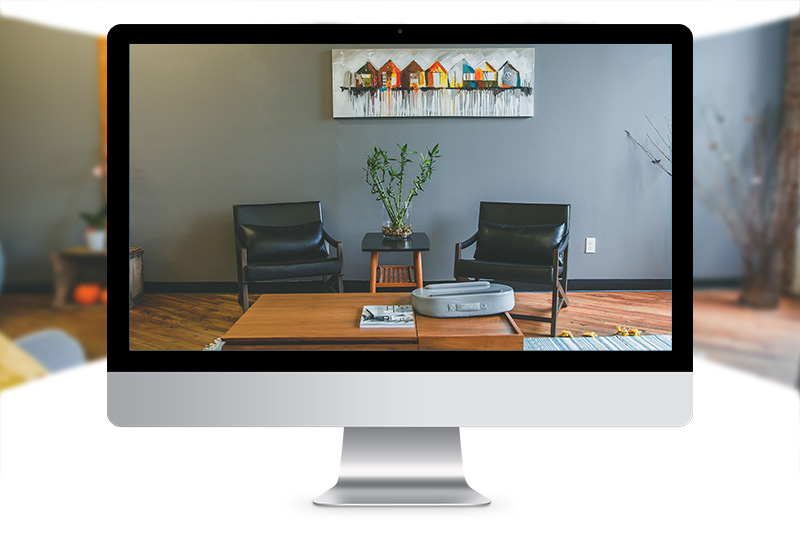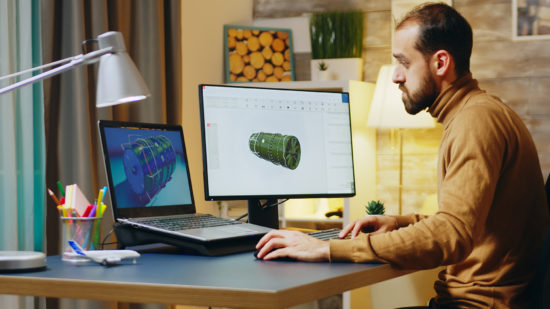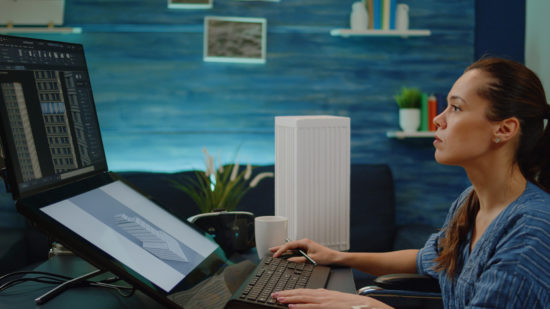
Creating a virtual tour for real estate properties offers a cutting-edge advantage in today’s fiercely competitive market. Realtors are constantly seeking innovative methods to distinguish their listings and capture the attention of potential buyers. The properties themselves are central to any real estate transaction, but the adoption of effective sales strategies is equally crucial. Embracing new technologies, particularly virtual tours, is essential for real estate agencies aiming to thrive in the digital age.
This is the perfect starting point for those interested in exploring the benefits and mastering the process of creating a virtual tour. Our comprehensive guide provides all the necessary details to embark on this digital journey, transforming your business with a unique and compelling marketing approach.
In the dynamic real estate field, the significance of showcasing properties cannot be overstated. It is not just about the properties themselves but also how they are presented to prospective buyers. Real estate professionals are turning to innovative solutions like virtual tours to stand out in a saturated market. By integrating virtual tour software for real estate, agencies can offer immersive and interactive property experiences, enhancing their sales strategy.
If you are keen on learning how to create a virtual tour that captivates and engages potential buyers, you’ve found the right resource. We provide a wealth of information to help you initiate this modern strategy, setting your business apart with this unique digital tool.
Facts to be Aware of Before You Step into Real Estate
- Websites featuring a virtual tour retain visitors for 5 to 10 times longer compared to sites lacking this feature.
- Over half of prospective buyers, specifically 54%, exclude homes from consideration if they don’t offer a virtual tour.
- Properties with virtual tours generate 48% higher interest among home buyers compared to listings that rely solely on photos and videos.
What Is A 360 Virtual Tour?
Crafting a virtual tour involves using a 360-degree camera, which is uniquely designed with a spherical lens to capture an all-encompassing view of its surroundings. In real estate, these tours are often presented as interactive programs or videos. Picture a scenario where a user is exploring a warehouse through a virtual tour on their phone. They can direct their view to different facility areas by simply moving their device. To advance along a corridor, the user has the option to either let the video progress naturally or interact with the screen to navigate through the space.
When one undertakes the creation of a virtual tour, the use of a 360-degree camera is integral. This camera type, featuring a spherical lens, records everything around it, making it ideal for comprehensive virtual experiences. In the context of real estate, such tours are displayed as either videos or interactive programs. For example, a virtual tour of a warehouse on a smartphone allows the viewer to explore various parts of the facility by moving their device in different directions. The progression through the tour is facilitated by either automatic video advancement or manual screen gestures.
The foundation of creating a virtual tour lies in the utilization of a 360-degree camera, capable of filming in a complete circle due to its spherical lens. This is particularly effective in the real estate domain, where virtual tours are presented as either interactive experiences or videos. Take, for instance, a virtual tour of a warehouse viewed on a mobile device. Users can look around different sections of the warehouse by tilting or rotating their devices. To navigate through various areas, such as corridors, users can either wait for the video to automatically move forward or use gestures on their screen to control the movement, offering an engaging and immersive virtual experience.
To see an example of how it looks from the client’s side, you can check out this tour of Buckingham Palace created by BBC.
Which Other Types of Virtual Tours Are There?
Creating unique tours in today’s digital age extends beyond just 360 experiences, offering a plethora of other innovative options. These alternatives include a variety of methods and tools, each uniquely contributing to creating immersive and engaging virtual tours. For instance, advanced virtual tour software enables the crafting of detailed and interactive tours, allowing users to experience a property or location in a dynamic way.
Such an approach, especially when applied to real estate, enhances the viewer’s experience, giving them a comprehensive understanding of the space. By employing how to make a virtual tour for real estate techniques, realtors can provide a more in-depth and accessible view of their properties.
In the field of virtual tour creation, the options extend far beyond the realm of 360-degree camera experiences. A diverse array of techniques and technologies are available, each offering unique ways to create a virtual tour that captivates and informs. Among these, virtual tour software stands out for its ability to construct detailed and interactive tours.
All these aspects are particularly crucial in real estate, where virtually walking through a property can significantly enhance the buyer’s experience and understanding. By learning how to create a virtual tour, real estate professionals can present their properties in a more engaging and informative manner, leveraging the latest in virtual technology.
The spectrum of creating virtual tours encompasses more than just the use of a 360-degree camera. A variety of innovative techniques and technologies are at the disposal of those seeking to create a virtual, offering unique ways to produce captivating and informative tours. Key among these is the use of virtual tour software, which is instrumental in creating detailed, interactive experiences.
Therefore, real estate professionals looking to leverage this technology can benefit from understanding how to make a virtual tour, utilizing these tools to showcase properties in an immersive and appealing manner.
After all, some of the other types of virtual tours include:
Regular video tour
One practical method for presenting real estate properties is filming a video of the premises, offering clients an initial understanding of the layout and appearance. To enhance this, incorporating elements of architectural animation can vividly depict the building’s structure and materials. The filming process varies widely, from using a simple phone camera to employing professional equipment, including quadcopter-mounted devices, to capture different perspectives.
Advantages of this approach include the ease of filming and the ability to create a specific ambiance using music, effects, and production values. However, there are drawbacks:
- the experience is not immersive for the viewer;
- the scale of spaces can be hard to gauge accurately;
- further examination of details requires pausing or rewinding the video.
Utilizing video footage as a primary tool for real estate presentations allows clients to gain an initial impression of a property’s design and layout. This method can be enriched by adding architectural animation, providing a detailed view of the building’s construction and material elements. The range of filming equipment is broad, encompassing everything from basic smartphone cameras to high-end professional gear and even devices mounted on quadcopters for aerial views.
The advantages of this approach are its simplicity in filming and the capacity to set a specific mood through music, effects, and overall production quality. On the downside, the method lacks immersiveness, potentially misrepresents spatial dimensions, and limits the viewer’s ability to review details without pausing or rewinding the footage.
Filming a property is a straightforward technique for showcasing real estate, giving clients a fundamental idea of its layout and aesthetic. The use of architectural animation can further enhance these presentations, providing a clearer insight into the building’s structural design and materials. Filming tools range from basic smartphone cameras to advanced professional equipment, including quadcopter-mounted devices for capturing diverse angles.
This method boasts several advantages: filming is straightforward, and the inclusion of music and visual effects can significantly enhance the mood and production value of the presentation. Nevertheless, there are certain limitations. The format could be more immersive, making it easier to convey the property’s scale accurately. Additionally, revisiting specific details or sections of the property requires pausing or rewinding the video.
3D walkthrough
If you create a virtual tour through 3D walkthroughs, it offers an immersive experience that simulates a building or property in three dimensions, accessible through a specialized application. This application, which can be integrated into a website as a small interactive window, places clients in the perspective of a visitor touring the property. While clients do not see themselves in the simulation, they can explore a comprehensive 3D representation of the site’s interior and exterior, complete with various interactive features.
Advantages of this approach include:
- a more realistic and relatable experience for the client;
- an enhanced sense of the property’s scale;
- the ability to navigate quickly through different areas.
Still, there are some challenges: creating these 3D walkthroughs requires significant effort and expertise, and sometimes the 3D models used may lack fine detail.
3D walkthroughs revolutionize the way clients experience properties by offering a simulated, interactive three-dimensional tour using specialized virtual tour software. Clients interact with this immersive application, often embedded in a website, feeling as if they are physically visiting the property. They have the ability to view detailed 3D renditions of both the interior and exterior, complete with interactive options for a comprehensive understanding of the space.
The benefits of using 3D walkthroughs for virtual tours are manifold. They provide clients with a highly realistic and immersive experience, a better perception of the property’s scale, and efficient navigation throughout the site. However, the process of how to create a virtual tour using 3D models can be complex and time-consuming, and occasionally, the resolution of the 3D models may not meet high-detail expectations.
3D walkthroughs serve as a cornerstone if you’d like to create a virtual tour, providing a deeply immersive experience where clients can explore a property in a fully simulated 3D environment. This technology, facilitated by advanced virtual tour software, allows clients to virtually step into the property through an application, often embedded within a website. Here, they can navigate a lifelike representation of the property’s interior and exterior spaces, complete with interactive elements for a thorough exploration.
The advantages of these 3D walkthroughs in virtual tours are significant. They offer a more tangible and engaging experience, an improved understanding of the property’s proportions, and swift navigation between areas. However, the process of how to make a virtual tour for real estate using 3D technology poses certain challenges. It demands a considerable level of skill and effort, and the detail in some 3D models might not always be of the highest quality.
Extended reality tour
Extended reality, encompassing virtual reality, augmented reality, and mixed reality, is transforming the real estate industry with immersive technologies. Augmented reality walkthroughs, accessible on mobile devices, offer a layer of digital enhancement over real-world views, while virtual and mixed reality experiences, typically presented on headsets, immerse users completely in a digitally simulated environment.
In these XR applications, prospective buildings and their interiors are visualized in 3D, providing users with a realistic scale as if they were physically present. Interactive features in XR applications, often manipulated through special controllers, enhance this hands-on experience.
Advantages: XR offers full immersion into the property, delivering a great sense of scale and realism. The improved interactive options make the experience more engaging for the user. Disadvantages: One significant drawback is the need for often expensive hardware, particularly for the more immersive VR and MR experiences.
Recent studies and surveys highlight the growing reliance on virtual tours in the real estate market:
- 3D and 360 virtual tours impact on sales. Properties showcased with 3D tours are likely to sell up to 31% faster and potentially at a higher price. These tours also reduce wasted viewing time by 40%, saving time and resources for both vendors and buyers. Properties with virtual tours receive about 87% more views than those without, indicating a strong preference among potential buyers for this technology.
- Buyer and seller preferences. Over 50% of adults have experienced a virtual tour, and 67% of home buyers express a preference for virtual tours when examining property listings. Interestingly, half of the buyers prefer virtual tours to traditional photography in their home search.
- Willingness to purchase based on virtual tours. A significant trend emerging in buyer behavior is the willingness to make a purchase decision based solely on a virtual tour. According to a survey by Rocket Mortgage, three out of five home shoppers are open to buying a home after only experiencing it through a virtual tour.
- Remote property offers. A survey by Redfin found that 63% of home buyers made offers on properties they hadn’t seen in person, underscoring the effectiveness of virtual tours in facilitating remote property purchases.
These statistics clearly demonstrate the increasing importance and effectiveness of virtual tours in the real estate industry, especially in the context of the ongoing digital transformation accelerated by the COVID-19 pandemic.
What Is the Process For Making a Virtual Tour For Real Estate Businesses?
Offering remote walkthroughs to customers and investors opens up several pathways, each with its unique level of complexity. By leveraging virtual tour software, businesses can create an engaging and informative virtual experience. This approach allows for a range of possibilities, from simple, user-friendly options to more sophisticated, feature-rich virtul tours solutions. Choosing the right tour software is crucial, as it determines the level of interactivity and realism in the virtual tour, thus impacting the overall user experience.
Providing customers and investors with the option of remote walkthroughs involves navigating through various methods, each presenting its own set of challenges and ease of implementation. Utilizing virtual tour software, businesses have the opportunity to create a virtual, immersive experience tailored to their specific needs. The spectrum of available tour software ranges from straightforward, easy-to-use platforms to more complex systems with advanced features, enabling a rich and detailed virtual tour experience.
The decision to incorporate remote walkthroughs for customers and investors introduces a range of strategies, from straightforward to more intricate approaches. Central to this is the use of virtual tour software, which plays a pivotal role in how businesses create a virtual, engaging, and detailed exploration of their offerings. The selection of appropriate tour software is a critical decision, as it directly influences the quality and functionality of the virtual tour, catering to varying degrees of user interaction and immersion.
Video tour
To create a high-definition virtual tour, selecting a professional camera is essential, ensuring that every property detail is captured with utmost clarity. Preparation is key, with special attention given to lighting conditions and ensuring the property is well-organized and presentable. To enhance the virtual experience, consider incorporating a 360 camera or drone footage for dynamic aerial perspectives.
After acquiring the footage, the next step involves using virtual tour software to organize, edit, and embellish the footage with effects and music before making it accessible online. This software simplifies your work if you want to create a virtual, immersive experience that can captivate potential customers.
Crafting a high-definition virtual tour demands more than just a professional camera; it requires meticulous preparation to ensure optimal lighting and a pristine property appearance. Integrating a 360 camera or drone can offer unique angles and aerial views to add depth and dimension to the tour.
Following the capture of this footage, the role of virtual tour software becomes pivotal. It assists in arranging and refining the footage, adding artistic effects and an auditory dimension, culminating in an online upload. This process enhances the virtual tour, making it an engaging and comprehensive portrayal of the property.
The creation of a high-definition virtual tour involves a blend of technology and preparation. Using a professional camera is just the beginning; setting the scene with perfect lighting and tidy property is crucial for capturing crisp, clear visuals. To give viewers a more rounded perspective, including a 360 camera or drone footage can provide additional angles and an aerial viewpoint.
After filming, the virtual tour software plays a significant role in organizing and enhancing the footage. Adding visual effects and background music, then uploading the final product online, completes the process, resulting in a captivating and detailed virtual tour that can effectively showcase the property.
3D Walkthrough
Initiating the creation of a 3D walkthrough starts with gathering references such as images or videos of the home. These references are crucial for creating accurate 3D models representing the property’s interior and exterior. With all necessary references in hand, the development of the application that facilitates this virtual experience can commence.
This involves not just the creation of 3D models but also the integration of features enabling users to move within the virtual space and potentially interact with objects and design elements. Developing XR walkthroughs goes a step further, necessitating specialized software development skills and the appropriate hardware for thorough testing and optimization.
The first step in developing a 3D walkthrough is to collect reference materials, including images and videos of the property. These are instrumental in creating detailed and precise 3D models of both the home’s interior and exterior. Once these references are gathered, the focus shifts to building the application that will deliver this immersive virtual experience.
The process behind involves crafting 3D models and designing interactive elements allowing users to navigate the space and engage with various aspects of the environment. Creating XR walkthroughs adds an additional layer of complexity, requiring advanced software development expertise and suitable hardware for effective testing.
In order to embark on a 3D walkthrough project, the initial phase involves collecting reference materials like images and videos of the home. These serve as the foundation for constructing accurate 3D models that depict the property’s inside and outside accurately. After acquiring these references, the next step is developing the application to present this virtual experience.
To note, the phase described is not limited to just creating 3D models; it extends to integrating functionalities that allow users to move from one location to another within the virtual environment and potentially interact with objects and the overall design. Designing XR walkthroughs demands a higher level of expertise in software development, alongside the need for appropriate hardware to conduct comprehensive testing and refinement.
Work with a partner
Mastering the skills to create a virtual tour using sophisticated virtual tour software can be a complex task, particularly for those without prior experience in this specific area. It involves a significant time investment and the need to dedicate a specialized team to this endeavor. Often, it’s more practical to partner with an experienced firm specializing in virtual tour software. This way, you provide the necessary references and specifications, and they handle the intricacies of the virtual tour creation, delivering the finished product within the agreed timeframes.
Developing the expertise to create a virtual tour, especially when new to using advanced tour software, demands considerable time and resources. Assigning a dedicated team is essential for success in this intricate field. However, many find it advantageous to collaborate with a seasoned partner experienced in virtual tour software. By sharing the project’s specific references and requirements with them, they can efficiently produce the desired virtual tour, adhering to the set deadlines.
The journey to effectively create a virtual tour, leveraging state-of-the-art virtual tour software, can be daunting and time-consuming, especially for those lacking previous experience in this niche. It requires not only a substantial time commitment but also the allocation of a team focused on mastering this tour software. In numerous cases, it is more judicious to seek an experienced partner to manage this process. Upon receiving your detailed references and specifications, they can skillfully craft the virtual tour, ensuring delivery within the established timeframes.
How Valuable Are 360 Tours In The Real Estate Market?
-
Safety and convenience for clients
Advanced virtual tour software integrates the concept of “create a virtual” experience by crafting tours that offer significant safety advantages, particularly during health crises. Clients exploring properties remotely receive a comprehensive first impression, akin to an in-person visit, but without the health risks and inconvenience of traveling and physical interactions at open houses.
-
Reduced travel for agents
Implementing virtual tours, crafted using professional virtual tour software, can greatly minimize travel time for real estate agents. The organizational effort required initially to create a virtual experience is offset by their ability to filter out less serious clients, allowing agents to focus on those genuinely interested in physical viewings, thus enhancing efficiency and cost-effectiveness.
-
Competitive edge in the market
Leveraging virtual tour software to create a virtual, immersive, interactive property tour offers real estate businesses a significant competitive advantage. The depth of experience provided by a well-designed virtual tour can captivate clients, potentially surpassing the appeal of competitors’ properties. This technological edge can be crucial in attracting clients, even when faced with competing properties that have certain advantages.
-
Customization in interactive tours
Virtual tour software facilitates the ability to create a virtual interactive tour that extends beyond basic walkthroughs. These tours enable clients to engage more directly with the property, such as rearranging furniture or altering interior designs, enhancing their ability to visualize the space as their own.
-
Creating emotional connections
The power of virtual tours in forming emotional connections between potential buyers or renters and properties is significant. As clients navigate through these tours, they begin to envision their life in the space, similar to the experience of an in-person visit. This imaginative and emotional engagement, driven by the immersive quality of the virtual tour, can often be a decisive factor in their decision to pursue a purchase or rental, underlining the importance of virtual tours in real estate marketing strategies.
Which are the best AR/VR companies for real estate?
Currently, there are hundreds of real estate virtual tour companies that create AR/VR experiences. To narrow your selection to the very best, you can look at their 3D portfolio and ask about their supported platforms and formats. We also recommend paying attention to reputation, possibly checking feedback on platforms like Clutch and Goodfirms.
The Future of Real Estate Virtual Tours
The future of real estate virtual tours is shaping up to be a transformative and pivotal aspect of property marketing, sales, and customer experience. With advancements in technology and changes in consumer behavior, the role of virtual tour software in the real estate industry is expanding rapidly. Here’s an in-depth look at what the future holds:
Integration of advanced technologies
-
Virtual and augmented reality. Incorporating Virtual Reality and Augmented Reality into virtual tour software is revolutionizing how customers interact with properties. A Goldman Sachs report projects that by 2025, the market for virtual reality and augmented reality in the real estate sector is anticipated to hit $2.6bn. Furthermore, the extended reality market is predicted to experience even more rapid growth during this period.
-
AI-driven enhancements. AI technology is being leveraged to create immersive 3D environments in virtual tours, offering realistic property representations.
-
Impact on sales. The use of VR in real estate is shown to reduce sales time, inasmuch as it enables potential buyers and tenants to better visualize and connect with properties, thus speeding up their decision-making processes.
Emerging trends and techniques
-
Interactive and guided tours. Virtual tour software now allows for interactive and guided tours, giving buyers control and enhancing exploration.
-
Virtual staging and home customization. Virtual staging has become a crucial tool in real estate, allowing for digital furnishing and decoration of properties. This approach in virtual tour software lets buyers see the potential of a property transformed into their dream home without the need for physical staging, thereby saving time and costs.
Widespread adoption and future standards
-
Growing prevalence. The rapid adoption of virtual tours has made them indispensable in the real estate industry, offering accessibility and customization.
-
Standardization in the industry. Experts predict AR and VR technologies will become standard in the real estate industry by 2023, indicating a profound shift towards more technologically advanced property showcasing and marketing strategies.
Enhancing the home buying experience
-
Improved realism and efficiency. The revolution of real estate virtual tours in 2023 has transformed the home-buying experience. The modern virtual tour software allows for more cutting-edge, immersive, and convenient approaches for prospective homeowners. The days of relying solely on static images and floor plans are fading, as virtual tours empower buyers to explore properties remotely, making the home buying process more efficient and enjoyable.
Future outlook
-
Continued technological integration. The future of real estate is undoubtedly virtual, with ongoing advancements in 3D home tours and other related technologies. The industry continues to adapt to technological advancements and evolving consumer preferences, suggesting that the role of virtual tour software will only grow more integral in the coming years.
Ultimately, the future of real estate virtual tours is marked by the integration of VR, AR, and AI technologies, enhancing the realism and interactivity of property showcases. Adopting these technologies in virtual tour software is not only improving the efficiency of the sales process but also reshaping the customer experience, making virtual tours a critical component in the real estate industry’s future.
These technological advancements are set to redefine user engagement. For instance, VR’s immersive environments can make a potential buyer feel as though they are physically present in a distant property, offering a detailed look at every nook and cranny without leaving their home. Similarly, AR applications in virtual tour software enable clients to overlay virtual furnishings and modifications onto existing spaces, thus personalizing the viewing experience to their tastes and needs.
Moreover, the integration of AI in virtual tour software is a game-changer. AI algorithms can analyze user behavior and preferences, offering personalized tour experiences and property recommendations. This not only enhances user engagement but also streamlines the property search process, saving time for both buyers and agents. Another significant advancement is the increasing accessibility of these technologies. As VR and AR devices become more affordable and widespread, virtual tours will be accessible to a broader audience, democratizing high-end property viewing experiences.
The future of real estate virtual tours also hints at a more interconnected digital ecosystem. Integration with social media platforms, real-time data analytics, and cloud computing can transform how properties are marketed and sold. Agents can leverage these technologies to reach a global audience, provide more compelling property presentations, and gain insights into market trends and buyer preferences.
In summary, as we look towards the future, the synergy of VR, AR, AI, and other emerging technologies within virtual tour software will not only transform how properties are presented and experienced but will also redefine the entire real estate transaction process. The result is a more dynamic, efficient, and user-centric market, adapting to the needs of a digitally savvy generation of buyers and sellers.
Real Estate Virtual Tour Services
As we have mentioned, there are hundreds of providers you can choose for your virtual experience. However, few of them will provide the level of experience and professionalism offered by 3D-Ace. Our studio has been creating 3D models and media for over 20 years and knows how to do virtual tours for real estate at the highest level of quality.
Much of our portfolio is dedicated to buildings — from architectural visualization to 3D walkthroughs and tours, and we have a large team of designers ready to bring your properties into the digital realm. You will be free to choose the level of immersion you want for the experience, and we will deliver it, even creating VR and XR apps if needed.
If you have some buildings or sites in mind that you want to digitally transform, just reach out to us. We will be happy to get the ball rolling and show how we can help.




